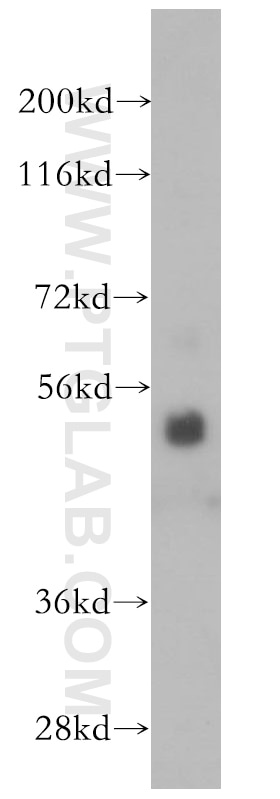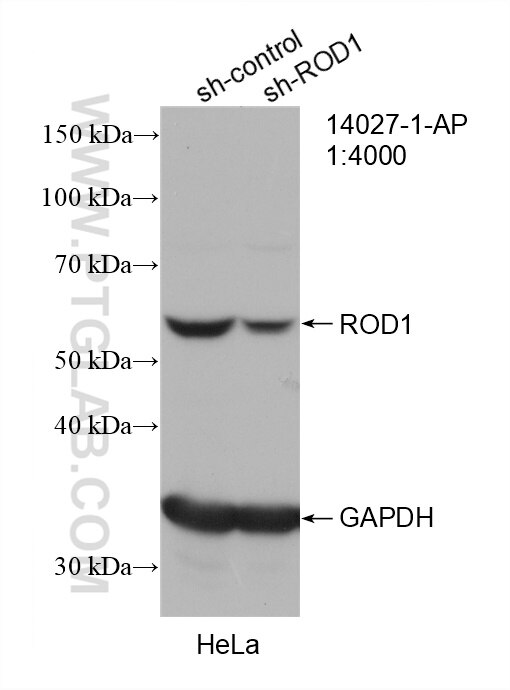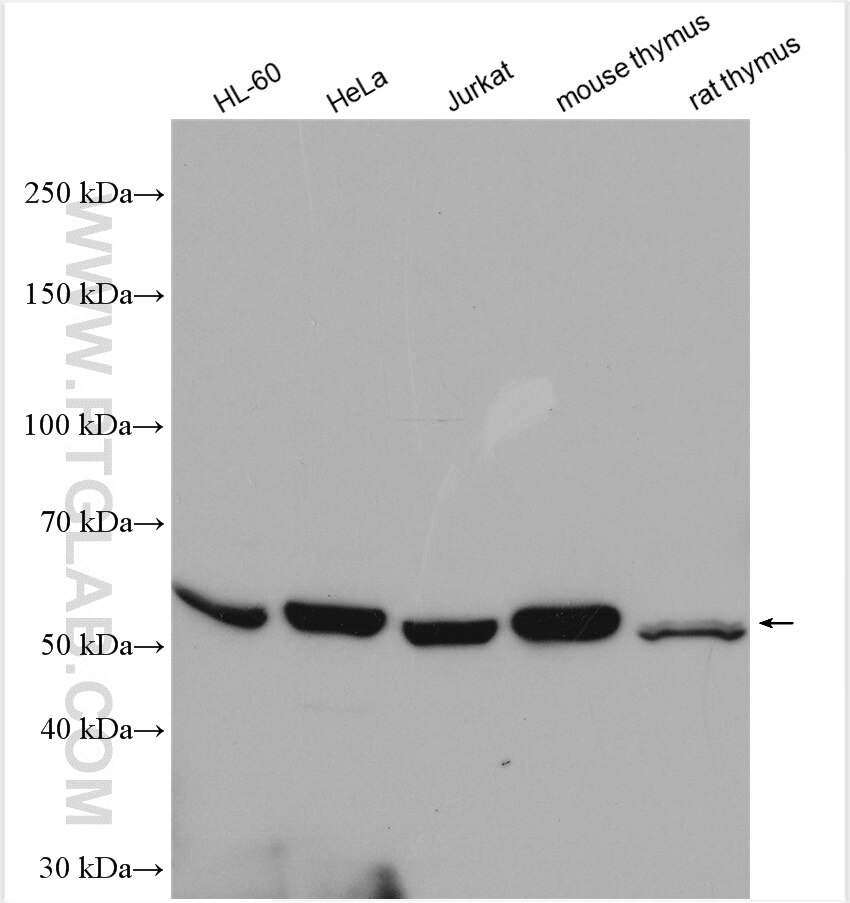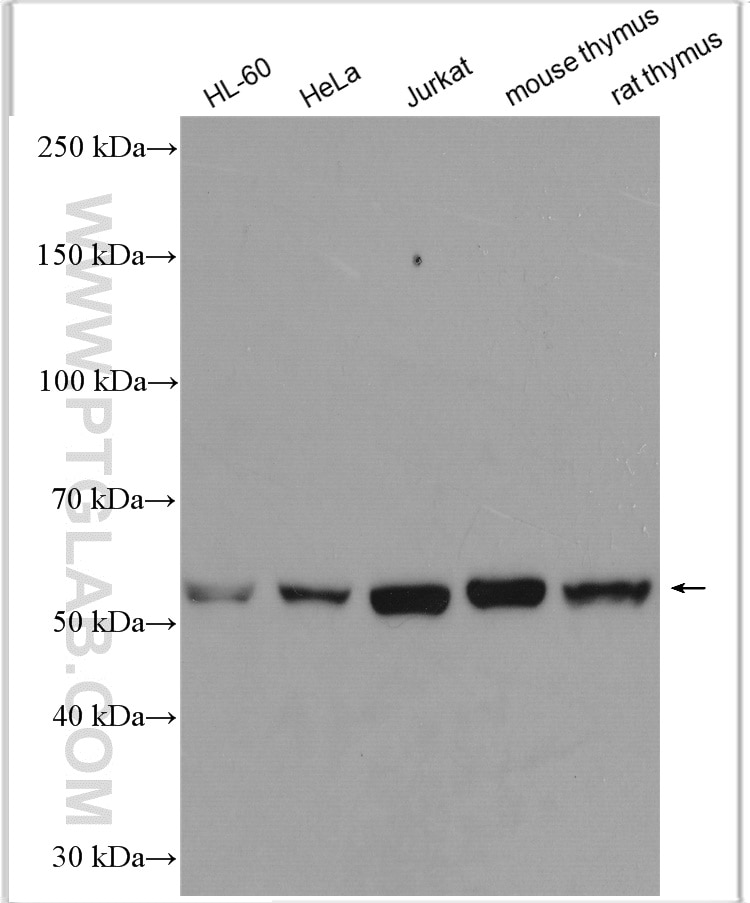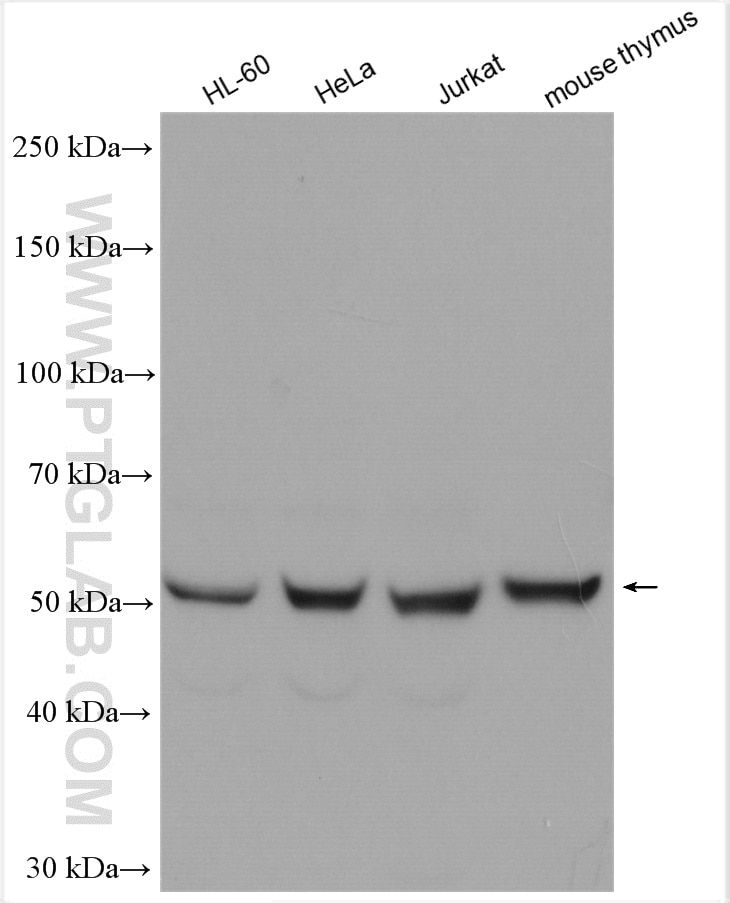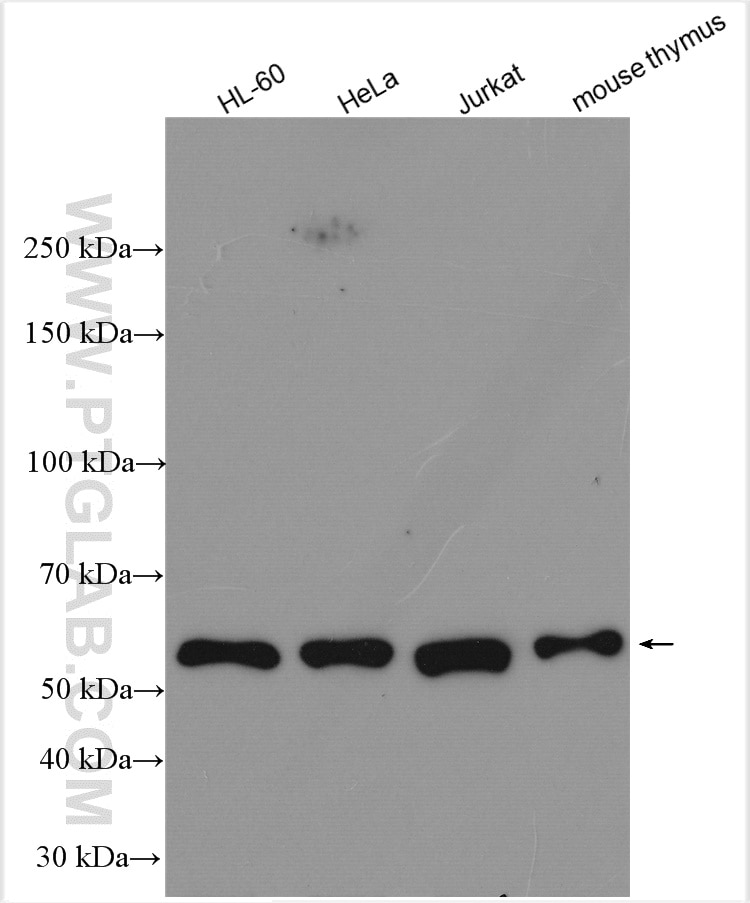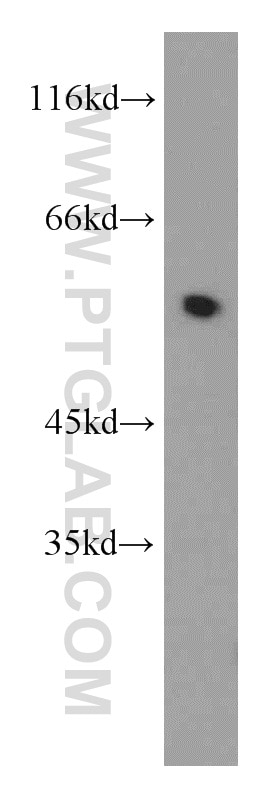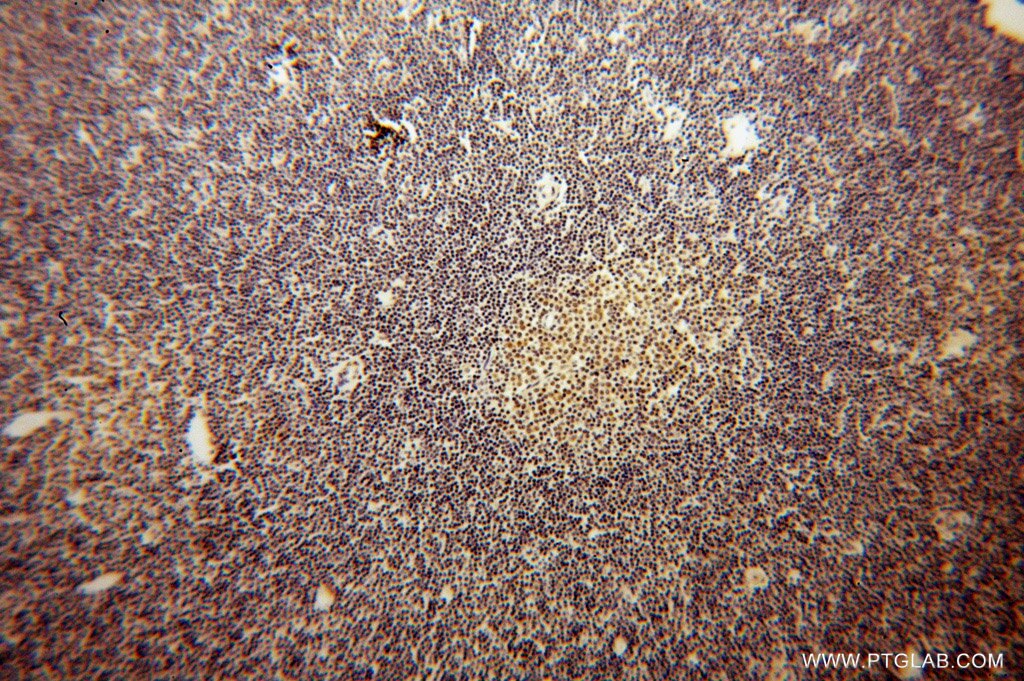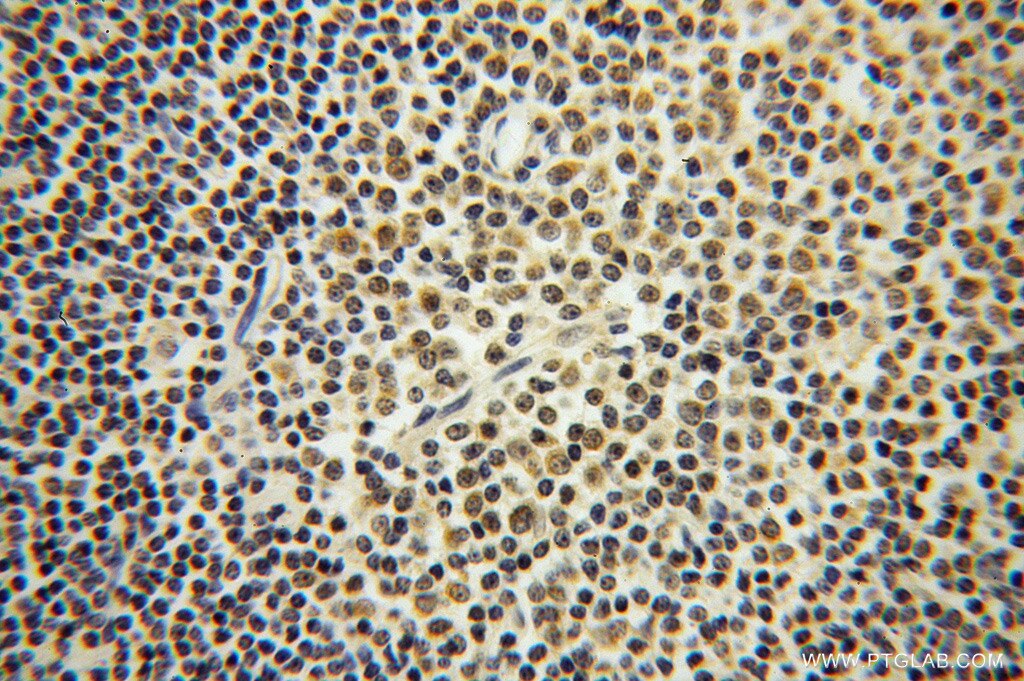- Phare
- Validé par KD/KO
Anticorps Polyclonal de lapin anti-ROD1
ROD1 Polyclonal Antibody for WB, IHC, ELISA
Hôte / Isotype
Lapin / IgG
Réactivité testée
Humain, rat, souris
Applications
WB, IHC, IF, CoIP, ELISA
Conjugaison
Non conjugué
N° de cat : 14027-1-AP
Synonymes
Galerie de données de validation
Applications testées
| Résultats positifs en WB | cellules HL-60, cellules HeLa, cellules Jurkat, tissu de thymus de rat, tissu de thymus de souris |
| Résultats positifs en IHC | tissu de lymphome humain il est suggéré de démasquer l'antigène avec un tampon de TE buffer pH 9.0; (*) À défaut, 'le démasquage de l'antigène peut être 'effectué avec un tampon citrate pH 6,0. |
Dilution recommandée
| Application | Dilution |
|---|---|
| Western Blot (WB) | WB : 1:2000-1:12000 |
| Immunohistochimie (IHC) | IHC : 1:20-1:200 |
| It is recommended that this reagent should be titrated in each testing system to obtain optimal results. | |
| Sample-dependent, check data in validation data gallery | |
Applications publiées
| KD/KO | See 2 publications below |
| WB | See 6 publications below |
| IHC | See 2 publications below |
| IF | See 1 publications below |
| CoIP | See 1 publications below |
Informations sur le produit
14027-1-AP cible ROD1 dans les applications de WB, IHC, IF, CoIP, ELISA et montre une réactivité avec des échantillons Humain, rat, souris
| Réactivité | Humain, rat, souris |
| Réactivité citée | Humain, souris |
| Hôte / Isotype | Lapin / IgG |
| Clonalité | Polyclonal |
| Type | Anticorps |
| Immunogène | ROD1 Protéine recombinante Ag5172 |
| Nom complet | ROD1 regulator of differentiation 1 (S. pombe) |
| Masse moléculaire calculée | 60 kDa |
| Poids moléculaire observé | 55-59 kDa |
| Numéro d’acquisition GenBank | BC044585 |
| Symbole du gène | ROD1 |
| Identification du gène (NCBI) | 9991 |
| Conjugaison | Non conjugué |
| Forme | Liquide |
| Méthode de purification | Purification par affinité contre l'antigène |
| Tampon de stockage | PBS with 0.02% sodium azide and 50% glycerol |
| Conditions de stockage | Stocker à -20°C. Stable pendant un an après l'expédition. L'aliquotage n'est pas nécessaire pour le stockage à -20oC Les 20ul contiennent 0,1% de BSA. |
Informations générales
ROD1 is a RNA-binding protein that mediates pre-mRNA alternative splicing regulation, it plays a role in the regulation of cell proliferation, differentiation and migration. ROD1 exist some isoforms and also can be modified with the molecular weight range from 55-59 kDa.
Protocole
| Product Specific Protocols | |
|---|---|
| WB protocol for ROD1 antibody 14027-1-AP | Download protocol |
| IHC protocol for ROD1 antibody 14027-1-AP | Download protocol |
| Standard Protocols | |
|---|---|
| Click here to view our Standard Protocols |
Publications
| Species | Application | Title |
|---|---|---|
Cell Res The RNA-binding protein ROD1/PTBP3 cotranscriptionally defines AID-loading sites to mediate antibody class switch in mammalian genomes.
| ||
iScience Polypyrimidine tract-binding protein 3/insulin-like growth factor 2 mRNA-binding proteins 3/high-mobility group A1 axis promotes renal cancer growth and metastasis | ||
Cancer Cell Int PTBP3 regulates proliferation of lung squamous cell carcinoma cells via CDC25A-mediated cell cycle progression. | ||
Cancer Cell Int PTBP3 promotes migration of non-small cell lung cancer through regulating E-cadherin in EMT signaling pathway. | ||
Oncol Lett Overexpression of ROD1 inhibits invasion of breast cancer cells by suppressing the translocation of β-catenin into the nucleus. | ||
Adv Sci (Weinh) Targeting PTBP3-Mediated Alternative Splicing of COX11 Induces Cuproptosis for Inhibiting Gastric Cancer Peritoneal Metastasis
|
Avis
The reviews below have been submitted by verified Proteintech customers who received an incentive for providing their feedback.
FH Yaroslav (Verified Customer) (08-03-2022) | multiple bands detected at all tested dulitions (1:3000-1:10000)
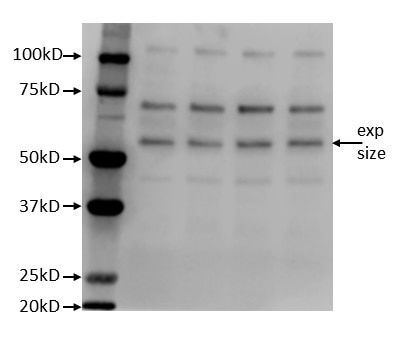 |
